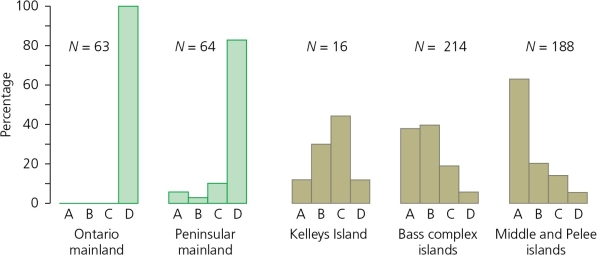Question 20
(Multiple Choice)
Figure 7.6 from your text,shown below,is a set of histograms showing the frequency of different color patterns of water snakes of Lake Erie (Nerodia sipedon).Type A snakes are unbanded,Type B are strongly banded,and Types C and D are intermediates.Given that natural selection favors unbanded snakes on the islands,how can you account for the presence/perpetuation of banded snakes on the islands? 
A) Mutation rates converting unbanded alleles to a banded form operate at high frequencies on islands.
B) Natural selection favors unbanded snakes on the mainland.
C) Snakes on the islands represent a case of the so-called founder effect.
D) Natural selection favors banded snakes on the mainland, which occasionally migrate to the islands.
Answer